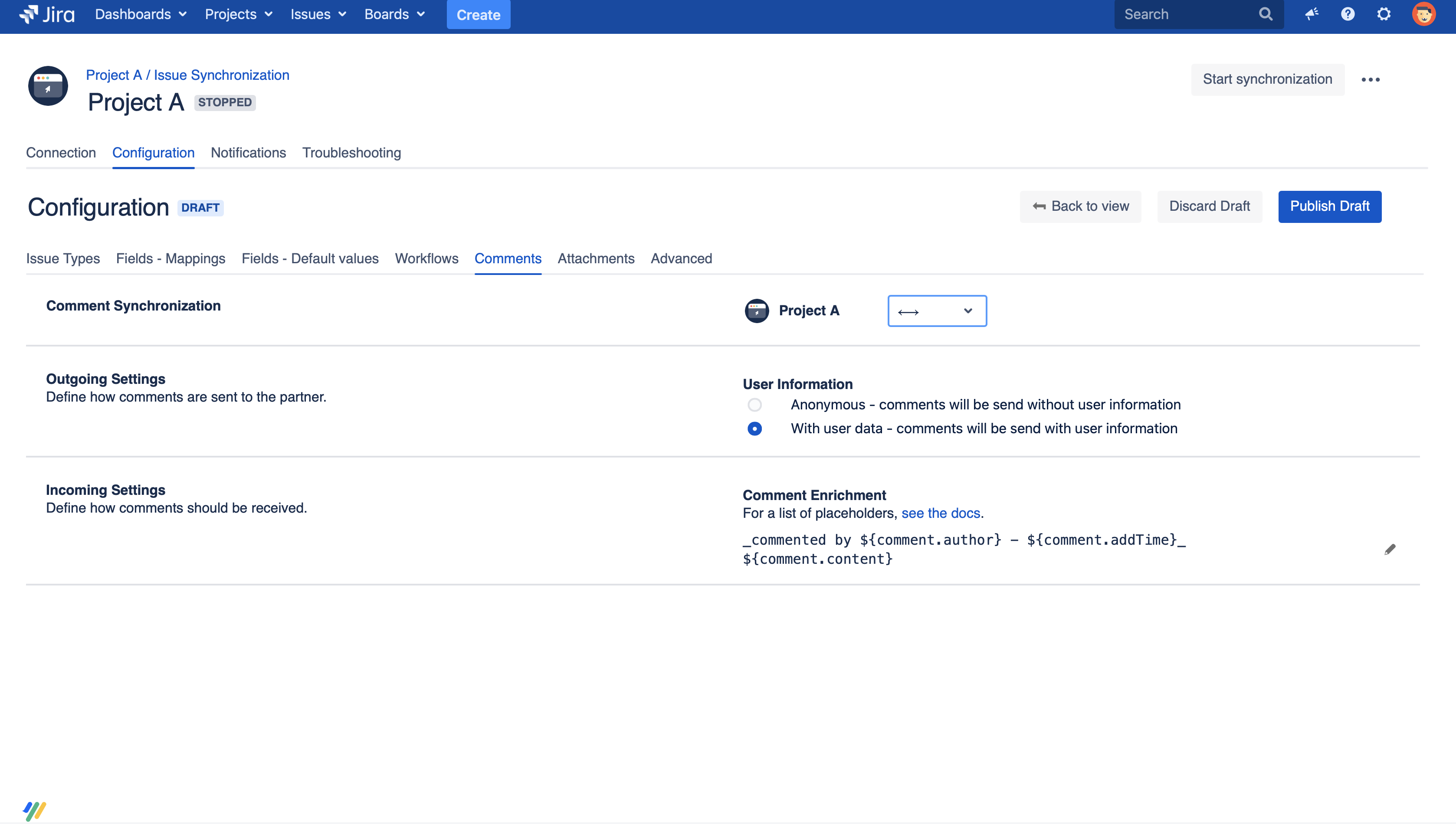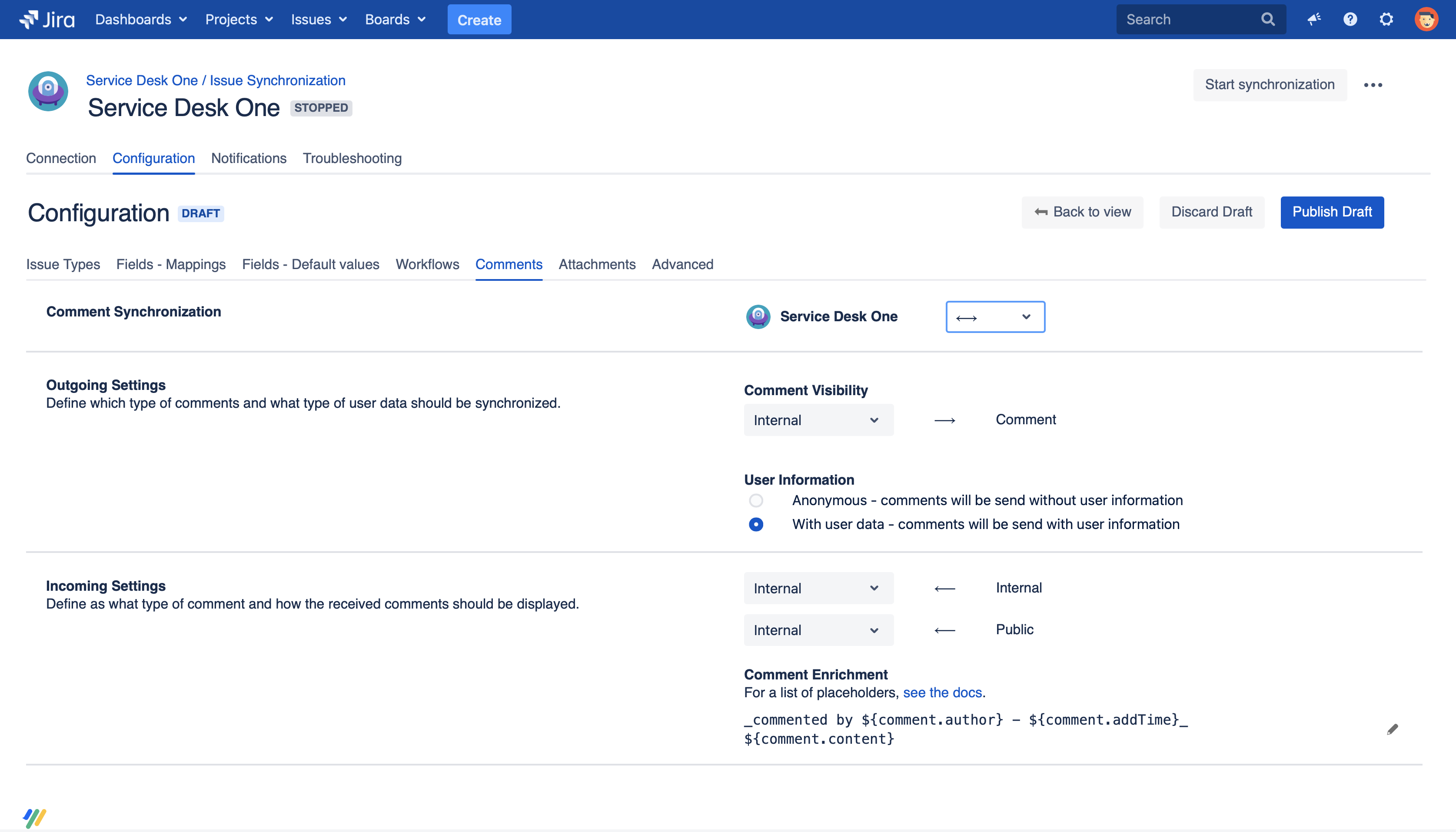Comments (email/file exchange)
In the comments tab, you can define whether comments are synchronized between instances.
Are you on the right help page?
If you connect Jiras...
... via HTTP(S) (server/data center, cloud, local), check out this page instead.
... via email or file exchange (server/data center behind a firewall), you're in the right place.
Comments have to be activated on the master side before they can be activated on the slave side as well.

Outgoing settings
Outgoing settings define how comments are sent to your synchronization partner. Comments are always send with the metadata when a comment has been created and edited. You can furthermore choose in order to send them including the actual user information who commented or if you want to send the comments anonymously - Backbone will then replace the user information in the comments when it synchronizes it to your partner.
Incoming settings
Incoming settings define how you display the comments you receive from your partner. You can define what metadata is included in your synchronization partner's comments. By default, this includes the author's name, a timestamp, and the comment itself. If you only want to see the comment content, you could simply use '${comment.content}' as template.
If you want to see more information, you can add more variables to the template:
| Variable | Description |
|---|---|
| The actual content of the comment. |
comment.author | The display name of the user who wrote the comment. |
comment.authorEmail | The email address of the user who wrote the comment. |
comment.addTime | The time when this comment has been added |
comment.formatAddTime("yy-MM-dd") | The time when this comment was added, expressed with a custom date format. For a list of available date formatting options, see the Java docs |
comment.editor | The display name of the user who edited the comment. |
comment.editorEmail | The email address of the user who edited the comment. |
comment.editTime | The time when this comment has been edited. |
comment.formatEditTime("yy-MM-dd") | The time when this comment has been edited, expressed with a custom date format. For a list of available date formatting options, see the Java docs |
comment.visibility | The visibility of a Jira ServiceManagement comment, either public or internal. Please use this option only in JSD scenarios. |
timeZone | The timezone in readable form (helpful when your partner project uses a different time zone than you). |
Deletion behavior
- If a comment has been added in project A and later deleted in project A, the comment would also be deleted in project B.
- If a comment has been added in project A and later deleted in project B, the comment will not be deleted in project A. If this comment is then edited in project A, it will be recreated in project B.
- Whenever comments are edited in the project where they have been created originally, the corresponding comments in the other project will be updated (overwritten).
Only synchronize certain comments
It's possible to configure JIRA so that only certain comments you make are synchronized to the partner instance.
- Create a group, e.g. 'Internal', and assign all users of the internal JIRA to it except the synchronization user.
- Switch your JIRA's comment visibility so that Groups & Project Roles are allowed.
- For every comment you only want to see internally, restrict it to the group 'Internal'.
- For every comment that should be public, no restriction should be applied.
With this configuration in place, the synchronization user can not see the internal comments anymore and will not synchronize them to the public JIRA.
Note that this is not possible in Jira Service Management as comment visibility can only be set to share with a customer or internal.
Jira Service Management
In Jira Service Management there are two sorts of comments: Internal and Public. With Backbone, you can define which type of comments you want to synchronize. Both the master and slave can decide which comments should be synced to the other instance ("internal", "public", "internal and public" or none) and decide how to receive incoming comments.

